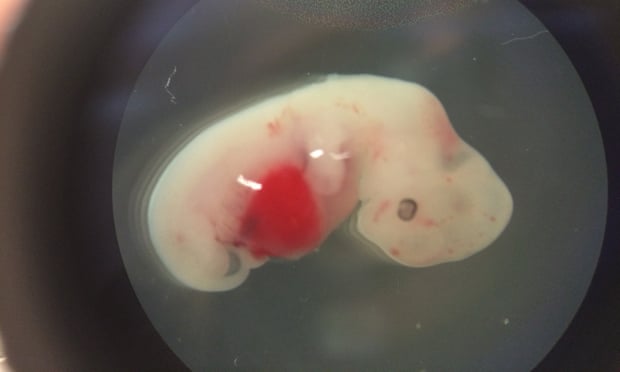A chimera is an organism with genetic material from two or more sources. Experiments in the field may save lives but are ethically controversial
Source: The Guardian
Human-monkey
Last week, researchers led by Spanish scientist Juan Carlos Izpisua Belmonte announced they had created the first human-monkey chimera embryos in China. The purpose of the experiment is to investigate ways of using animals to grow human organs for transplants. The organs could be genetically matched by taking the recipient’s cells and reprogramming them into stem cells.
Human-pig
In 2017, scientists from the Salk Institute in California (led again by Izpisua Belmonte) tried to grow the first embryos containing cells from humans and pigs. The process proved to be more challenging than expected and was very inefficient: from 2,075 implanted embryos, only 186 developed up to the 28-day time limit for the project.
Human-human

Chimeras also exist in the natural world. There have been a number of documented human cases. Most recently, American singer Taylor Muhl discovered she was carrying genetic material from her fraternal twin sister, whose egg had fused with hers in their mother’s womb. This explains a large section of darker skin on her torso – it comes from her sister’s DNA.
Virus chimera
Chimeras can help to fight diseases. In 2017, Portuguese researchers created a chimera virus, a mouse virus with a human viral gene, which enables them to investigate new ways to treat cancer caused by human herpes virus infection. The team found out that when the cancer-causing virus loses a protein, called LANA, it also loses its ability to cause cancer.
Human-mouse
In March, Japan loosened its guidelines, lifting a two-week limit on the growth of human-animal chimeras and allowing the transplantation of chimeric embryos or hybrids into animals, but not humans. Pending approval, a Japanese stem cell scientist, Hiromitsu Nakauchi, plans to insert human stem cells into mice or rats in an attempt to grow a human pancreas in the animal. As a safeguard, if too many human cells creep into the rat’s brains, the experiment will be stopped.

































Leave a Comment
You must be logged in to post a comment.